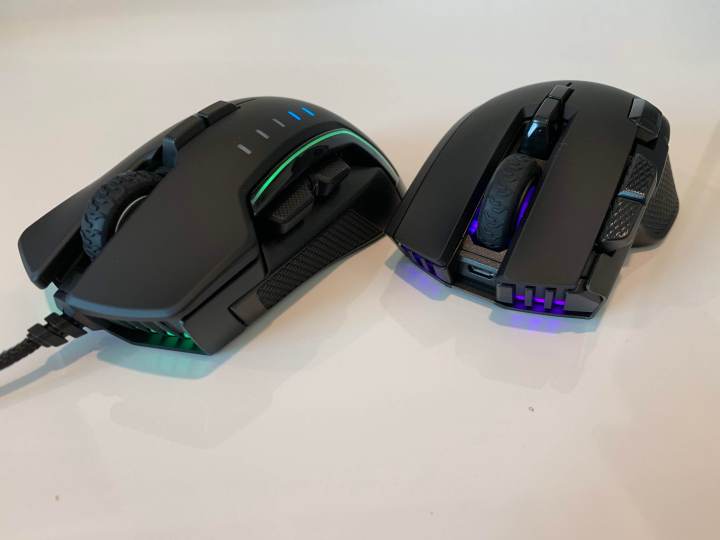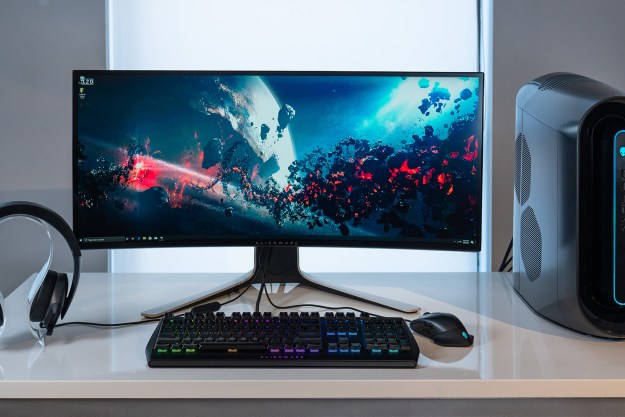
Corsair h updated its Ironclaw and Glaive line of gaming mice, adding ergonomic comfort, higher precision tracking, three-zone RGB lighting control, and surface calibration to allow gamers to play on just about any surface. Though both the Ironclaw RGB Wireless and Glaive RGB Pro support a new optical sensor developed in conjunction with PixArt that delivers 18,000 DPI of tracking accuracy, there are some differences between the two devices.
Both mice share similar aesthetics this year, with a curved top that contours to your palm for easy gripping, a large metal scroll wheel with a large rubberized covering between the two front buttons, and comfortable thumb grips. The Ironclaw is slightly larger and will accommodate most hand sizes comfortably, while the Glaive comes with two additional rubberized thumb grips to help improve ergonomics and give you a more “custom” fit. In my time with the Ironclaw and the Glaive, both were very comfortable and gamers with larger hands should be able to minimize fatigue during long gaming sessions thanks to the larger grips. Given the contours and the grip design, these mice were designed for right-handed users and it would be nice to see if Corsair would create southpaw versions.
The buttons are responsive and Corsair claims that the Omron switches add to the mice’s durability. The Omron switches are good for 50 million clicks. While the Ironclaw has 10 buttons, the Glaive has seven. The button layouts are slightly different between the two, and we prefer the Glaive’s arrangement slightly better. Gamers will appreciate how accurate the tracking is on both devices, and clickiness and responsiveness is spot on regardless of the model you choose. Both mice are lightweight — the Glaive weighs just 115 grams and the Ironclaw is 15 grams heavier because of its rechargeable battery — so comfort and ergonomics are thought through.
Button profiles can also easily be saved on the mouse, rather than on software on the PC, for added convenience. Aggressive vent-like panels on the front and three RGB zones add gaming flair to both mice.

Given that the Ironclaw RGB Wireless is a wireless mouse, users can rely on either Bluetooth or a 2.4Ghz SlipStream connection for an untethered experience, or connect the braided micro USB cable to the front for wired use. Battery life is rated at 50 hours, and in the week that we’ve used the Ironclaw at night after work, we haven’t had to recharge the mouse yet.
There’s also a surface calibration utility that helps the devices maintain accurate tracking capability on various surfaces. This year, the optical sensor can track up to 18,000 DPI, up from 16,000 DPI from the prior generation Glaive. Tracking was accurate, even on glossy and glass surfaces, an area that less expensive mice often have problems with. The calibration tool will come in handy for mobile gamers who don’t want to tote around a separate mouse pad.
The Ironclaw RGB Wireless retails for $80, while the redesigned Glaive RGB Pro will be available for $70.
Editors' Recommendations
- Intel just boosted gaming performance by up to 155%
- The one problem with Mac gaming no one is talking about
- This stunning Corsair keycap set has one major problem
- Corsair’s new standing desk might finally tempt me to buy one
- Windows 11 could be hurting your gaming performance


